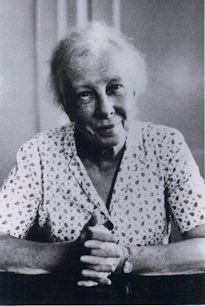Lillian Gilbreth, industrial engineer and expert in motion studies, was a pioneer in recognizing the interrelationship between engineering and human relations. She understood – and convinced industrial managers and equipment developers – that the behavior and efficiency of individual workers was often the product of the quality and effectiveness of the work environment.
Her ideas helped encourage the development of industrial engineering curricula in engineering schools, and her ideas about the qualities that produce good supervisors and what kind of workers were best suited to particular kinds of work was equally innovative, and contributed to the growing field of career assessment.
Gilbreth developed many of her ideas and co-authored numerous books and scientific studies with her husband, Frank — and while doing so, she had 12 children in 17 years. When she was widowed, she carried on managing the company she and her husband had formed and managed to put all of her children through college.
Gilbreth continued to apply the principles of modern business methods to the home, and published two books about the topic, The Home-Maker and Her Job and Management in the Home, as well as many articles in popular periodicals about the topic.
Gilbreth also had a special concern for the needs of those with physical handicaps, and used the techniques of motion analysis to design special equipment to make housework easier for these individuals. She was also a consultant to the Institute of Rehabilitation Medicine. She was active in volunteer organizations, notably the Girl Scouts and served as a member of the President’s Emergency Committee for Unemployment Relief in 1930 and as an educational adviser to the Office of War Information during the Second World War.
She was named an honorary member of the Society of Industrial Engineers (which did not then admit women to membership) and in 1966 was the first woman to receive the Hoover Medal for distinguished public service by an engineer. She encouraged women to become engineers, and was honored for that commitment by the Society of Women Engineers. Her family is recalled by humorous reminiscences by her children Frank Jr. and Ernestine in the book Cheaper By the Dozen and Belles on Their Toes.

